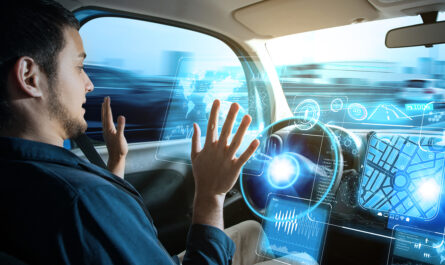What is Drive by Wire?
Traditional vehicles use mechanical and hydraulic systems to directly link important vehicle controls like the brake pedal, gas pedal, and steering wheel to the brakes, engine, and steering system. This technology removes these direct mechanical links in favor of electronic signals, sensors, and actuators. In this system, the brake pedal, gas pedal, and steering wheel send electronic signals to a computer which then controls the brakes, engine, and steering via actuators and motors.
Why are Automakers Adopting Drive by Wire?
There are several key reasons why automakers are increasingly adopting this technology. One of the primary motivations is safety. Removing direct mechanical linkages in favor of electronic control allows for features like electronic stability control, traction control, antilock brakes, and advanced driver assistance systems. Electronics provide more precise control and integration compared to purely mechanical systems. Drive by Wire also enables features like brake-by-wire which can apply braking more quickly and smoothly than a hydraulic system in an emergency situation.
This technology also improves a vehicle’s overall drivability. Electronics allow for adjustable accelerator and brake pedal maps to better suit driver preferences and conditions. Steering effort can also be adjusted electronically for parking, high-speed stability, or comfort based on road and vehicle speed. Additionally, drive by wire improves design flexibility. Wire harnesses and actuators take up less space than hydraulic lines and master cylinders, freeing up interior and engine bay space for other components and increased passenger and cargo volume.
Enabled Technologies and Future Potential
One promising application of it is steer-by-wire which completely replaces the traditional steering column and rack-and-pinion system with electronic control of the wheels. This allows for innovative steering wheel and column designs as well as advanced autonomous driving functions. Steer-by-wire could potentially eliminate the steering column and wheel entirely in fully self-driving cars.
Brake-by-wire takes full advantage of electronic actuation by integrating the brake pedal, booster, and entire braking system into an electronically controlled setup. This facilitates advanced braking capabilities like intelligent regenerative braking in EVs. It may even lead to a “brakeless” system using only the electric motor for slowing and stopping in future autonomous vehicles.
Drive by wire technology is also enabling more advanced driver assistance and semi-autonomous driving systems. Electronic throttle, brake, and steering control is integral to functions like adaptive cruise control, lane centering, and automatic emergency braking. As self-driving systems continue advancing, full vehicle autonomy may be achievable through coordinated electronic control of all primary vehicle systems using drive by wire architecture.
Challenges of Systems
While the advantages of drive by wire are compelling, there are also challenges to implementing the technology safely and effectively at scale. Moving vehicle controls to an electronic domain introduces cybersecurity risks that must be rigorously addressed. Systems must be thoroughly tested and certified to high safety standards to prevent potential failures or hacking that could impact critical driving functions.
Reliability is also a key concern with its replacing mechanical redundancies with fail-safe electronics and software. Automakers must ensure functional safety through measures like extensive fault detection, multiple computing modules for redundancy, and safe recovery modes in the event of a failure or malfunction. Standards and benchmarks will need to continually evolve along with the technology.
Finally, integrating its technologies across new and existing vehicle platforms presents an implementation challenge. Seamless upgrade paths and retrofitting of legacy vehicles requires extensive validation and testing that may slow widespread adoption. However, as standards mature and costs decline, drive by wire capabilities can be made increasingly accessible.
The Future is Drive by Wire
While obstacles remain, automakers are committed to addressing the issues to deliver the inherent advantages of it. As electronic and software capabilities continue advancing rapidly, this technology will become the new normal for major vehicle systems in the coming decade. Fully autonomous vehicles may even operate without direct physical controls at all, relying entirely on virtual interfaces and responsive algorithms. As safety, security, and public confidence in electronics grow, the coming generation of vehicles promises to take full advantage of the transformative potential in drive by wire.
*Note:
1. Source: Coherent Market Insights, Public sources, Desk research
2. We have leveraged AI tools to mine information and compile it
About Author - Ravina Pandya
Ravina Pandya,a content writer, has a strong foothold in the market research industry. She specializes in writing well-researched articles from different industries, including food and beverages, information and technology, healthcare, chemicals and materials, etc. With an MBA in E-commerce, she has expertise in SEO-optimized content that resonates with industry professionals. LinkedIn Profile

 by
by 


